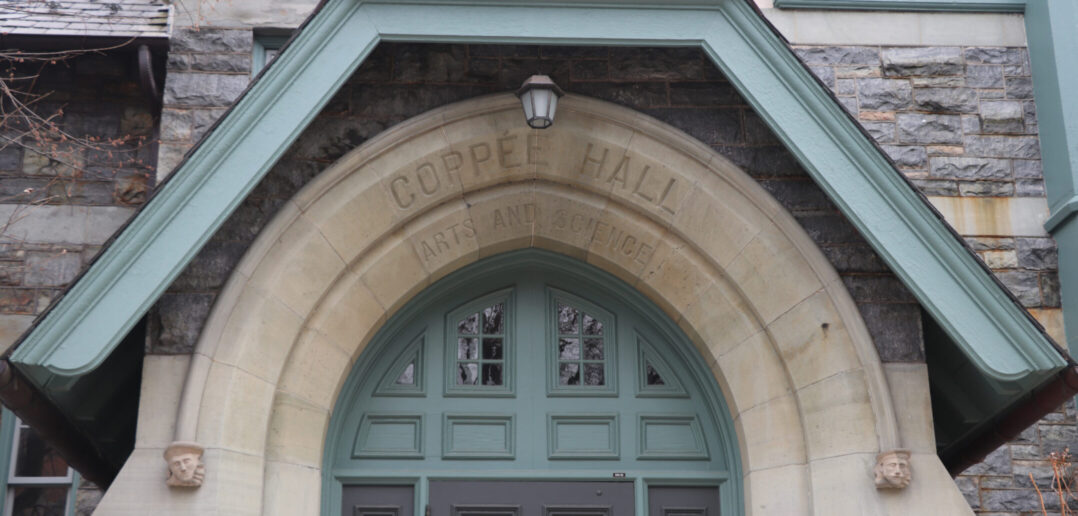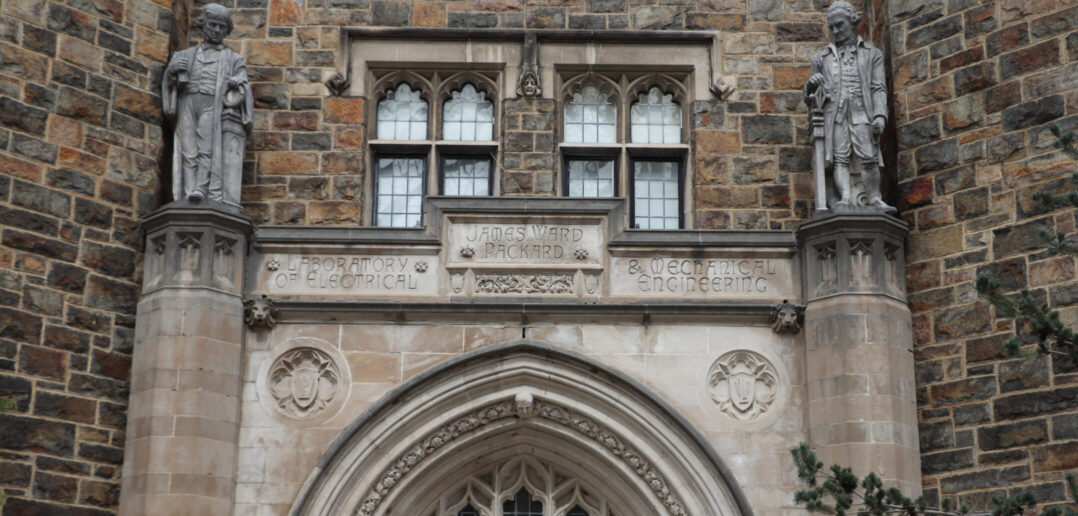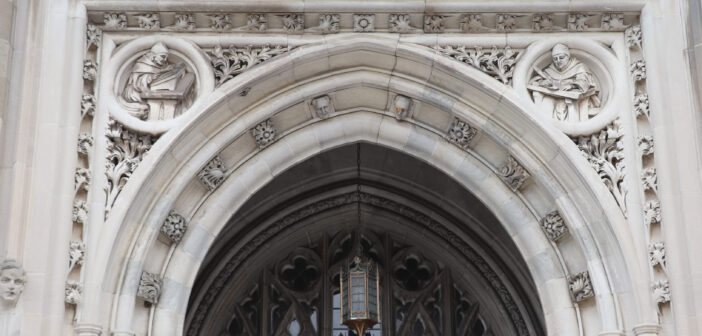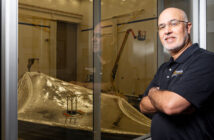Walking around Lehigh’s campus, some may notice sculpted faces welcoming them into and throughout university buildings. Some faces pay homage to a field of study, while others commemorate individual figures. All of them tell a part of Lehigh’s history.
Ilhan Citak, an archives and special collections librarian, said James Burley and Theodore Visscher were Lehigh’s two primary architects from the 1920s to 40s. They designed the Alumni Memorial Building and Packard Laboratory, among other buildings — both of which contain sculptures in their designs.
Citak said these buildings were inspired by British and Scottish architecture that mimicked buildings found at Oxford and Cambridge. These influences are reflected in Lehigh’s entrances, facades, windows and other architectural aspects.
“The architects who built the buildings were quite free in what they actually built,” Archeology professor David Small said. “They didn’t feel that they had to follow one tradition absolutely.”
Small said the figures and faces on the exterior and interior of buildings, including Coppee Hall, Packard Lab and Alumni Memorial Building, is typical of medieval Gothic design.

Faces can be found on the outside of Lehigh’s journalism building, Coppee Hall on March 12, 2023. Two faces are engraved beside the main door of Coppee Hall. (Jinshan Tu/B&W Staff)
Citak said the faces on Coppee are generic drama and theater masks. The sculptures flanking the entrance and interior of Packard and Alumni Memorial, however, have more specific historical importance to the buildings.
He said the sculptures outside of Packard were built in the 1920s and depict scientists Michael Faraday and James Watt. There are also figures displayed in the entryway of the building, one of whom is James Ward Packard, class of 1884, the benefactor and donor of the laboratory.

Lehigh University displays faces and figures on the Packard Laboratory building on March 12, 2023. Other buildings on Lehigh’s campus have faces similarly displayed like Coppee Hall and Linderman Library. (Jinshan Tu/B&W Staff)
Citak said Packard earned an engineering degree from Lehigh and designed the automobile that resides on the main floor of the building. The other two faces in the entryway are of the university’s president and the president of the Board of Trustees in 1930, the year in which the building was constructed.
The Alumni Memorial Building, which was built in honor of Lehigh alumni who died in World War I, has a face sculpted on the east side of the building. Citak said it is possible the face belongs to Henry Drinker, class of 1871, who led fundraising activities for the building.
According to Lehigh’s digital collections, the faces decorating buildings like Grace Hall and Linderman Library also likely belong to donors, former board members and presidents.
Citak said Lehigh’s architectural history speaks to the university’s evolution and campus culture.
As one example, he said the implementation of women’s restrooms and dormitories demonstrates the university’s social growth.
Many buildings were expanded between the 1920s and 1950s, including Linderman, which quadrupled in size. Citak said this indicated the university’s growing academic success.
“(Linderman) looks like you walk into a divine space, like some sort of temple of knowledge, and you are ready to create something new,” Citak said.
He said each of Lehigh’s buildings and their architectural elements serve as first-hand evidence of all the university’s sporting, social and intellectual activities throughout the years.
Architecture professor Bruce Thomas said Lehigh’s older buildings have long lives and should be appreciated.
“You don’t throw away things that are of value and of quality,” Thomas said. “They shouldn’t tear down things lightly.”
He said while it is important to value historical buildings, mixing them with contemporary architecture is a good thing, such as Lehigh’s more modern buildings and renovations.
Citak said the Archives and Special Collections librarians work to educate the community and uphold the university’s memory by collecting and preserving its history. He said their job is important because this archival information may otherwise be forgotten.
“Preserving the history is allowing us to keep the memory fresh from where we are coming from and where we are heading to,” Citak said.






Comment policy
Comments posted to The Brown and White website are reviewed by a moderator before being approved. Incendiary speech or harassing language, including comments targeted at individuals, may be deemed unacceptable and not published. Spam and other soliciting will also be declined.
The Brown and White also reserves the right to not publish entirely anonymous comments.